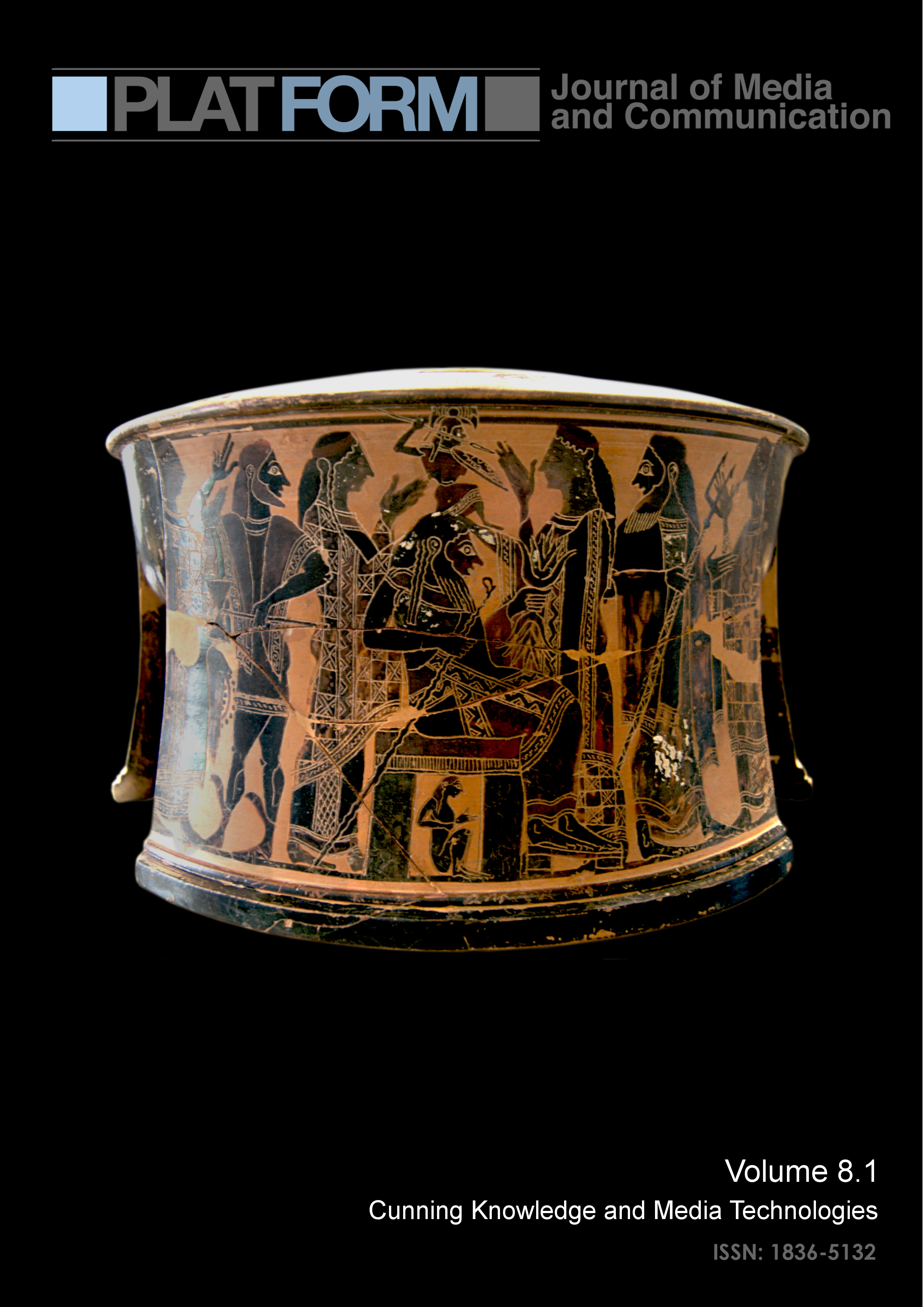Volume Editors: Sophie Freeman, Geoff Hondroudakis, Maria Kamal, and Brian McKitrick
Abstract submissions due: 12th of February, 2021
Full paper submissions due: 12th of April, 2021
All abstracts should be submitted via email to platformjmc@gmail.com. Abstracts must be accompanied by a brief curriculum vitae and biographical note, and should not exceed 350 words. Abstracts are to be submitted no later than 12 February 2021. Full papers are due 12 April 2021. Please be aware that acceptance of abstracts does not guarantee publication. All submissions should be from early career researchers (defined as being within a few years of completing their PhD) or current graduate students undertaking their Masters, PhD, or international equivalent.
Please send all further questions to platformjmc@gmail.com
All eligible submissions will be sent for double-blind peer-review. Early submission is highly encouraged as the review process will commence on submission.
Note: Please read the submission guidelines before submitting work. Submissions received not in house style will not be accepted and authors will be asked to resubmit their work with the correct formatting before it is sent for review.
From photographs to viral videos and memes, images pervade digital communication. In one
sense, the global health crisis compresses a media landscape already dominated by
branded content, extremism, tokenism, fakes and misinformation hosted on platforms
underpinned by logics of surveillance capitalism. The long-discussed
spectacle of the image appears, in this sense, to degrade the epistemic function of visuality,
breaking the bonds between the visible and the true.
Yet, within this milieu, a cell phone video documenting police brutality enabled social media
audiences to witness the events that led to George Floyd’s death and galvanised global
protests in support of the Black Lives Matter movement, demonstrating the power of visuals
shared in the digital media sphere. Activism and political dissent take on new forms (or
recycle old forms with new technologies) to hold power to account through visual forms of
communication and witnessing. Such mass movements reveal that the suturing of the
visible, the true, and the politically effective remains possible, though it requires enormous
collective work.
Beyond and beneath these most overt sites of struggle, visuality as a conflux of sensing and
representing renews fundamental problems of knowing and being. Scholars such as Wendy
Chun have pointed to the technoscientific collapse of the image with its process of
becoming. Planetary computation prompts us to rethink how technics make visible the
invisible, converting the Earth into a vast sensing apparatus from which data become visual
object. Such frames contrast with notions of the photograph as part of social rituals and a
means of participating in the “mortality, vulnerability and mutability” of others (Zelizer, 2010,
p. 25). Visuality thus also activates ontological questions of the determinations and disjuncts
between the frame of the human and that of technical system.
This issue of Platform seeks papers which engage with the question: What is the relationship
between the visual, the true, and the political today? What does visual signify today in the
digital realm in regards to activism and discourse? How do visual technologies bolster
reactionary powers through new forms of surveillance and policing? What does the visual
signify in terms of representation as such, of the relationship between the sign, its apparatus,
and its meaning? Platform invites papers on all aspects related to visual politics and digital
media, including but not limited to:
- Online and physical activism
- Circulation dynamics of visual media
- Witnessing and accountability
- Collective memory, visibility and accessibility
- Images as transient: attention and content overload
- Manipulation, interference and disinformation
- Online and offline moderation
- Ideologies of visibility and concealment
- Apparatuses and applications of data visualisation
- Sensing and Visual Augmentation
- Memes and formats of online cultural artifacts
- Image appropriation and remix culture
- Images, memorialisation and mourning rituals
Platform: Journal of Media and Communication is a fully refereed, open-access online graduate journal. Founded and published by the School of Culture and Communication at the University of Melbourne (Australia), Platform was launched in November 2008.
Platform is refereed by an international board of established and emerging scholars working across diverse fields in media and communication studies, and is edited by graduate students at the University of Melbourne.


